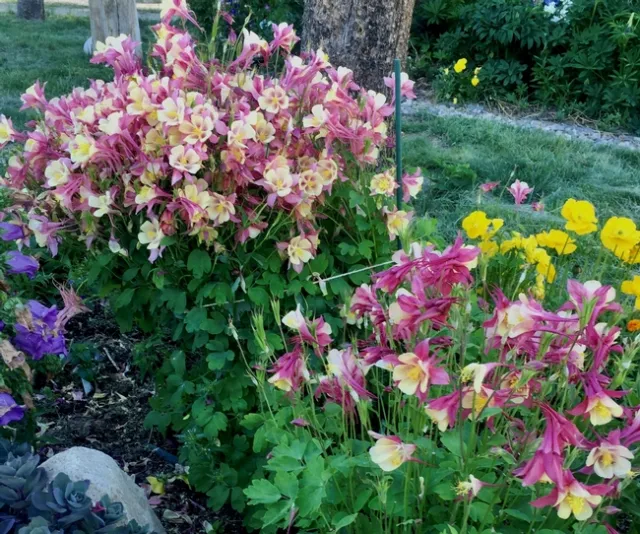
Columbine By Ardis Neilsen UCCE Master Gardener
Common Name: Columbine Scientific Name: Aquilegia
Planting Zone: USDA zones 3-9
Size: six inches to four-feet tall; one to two-feet wide
Bloom Season: spring to summer, four to six weeks
Exposure: partial shade preferred , partly sunny in cooler climates
Pruning Needs: trim lightly |
|
Water Needs: regular watering
|
Columbine plants are considered to be garden charmers, boasting of lacey foliage and exquisitely-shaped airy flowers in varying colors, depending on the variety. Layers of color often occur from soft pastels to intense hues with white and yellow accents. Columbines have sepals and petals that frequently contrast in color which create a layered effect. It is a popular cutting flower and lasts about two weeks in floral arrangements.
Columbines belong to the Ranuculaceae (buttercup) family with over 60 species and many hybrids. This herbaceous perennial is hardy once established and is found in the wild throughout North America.
The plant's scientific name, Aquilegia, is derived from a Latin word “aquilia,” which translates to “eagle,” because its spurred flower petals resemble eagle's claws. Most columbine varieties have long spurs, which are long, narrow strips projecting from the back of its blooms. These spurs contain nectar and attract hummingbirds, bees and butterflies.
Slender stems support the erect or nodding, bell-shaped blooms above its foliage. Columbines are frequently planted in cottage and rock gardens.
These plants live about three to four years, but produce seeds prolifically, so it could persist in your garden for years, if you decide not to deadhead the flowers and collect the seeds or let them fall to the ground. Cut back old stems for second crop of flowers. At the end of the growing season, cut stems once again to ground level. They should return next spring.
If you decide to grow columbine from seed, it is helpful to refrigerate the seeds for three to four weeks before planting. These plants thrive best in slightly acidic, well-drained, sandy, loamy, compost-enriched soil. They appreciate monthly liquid fertilizer feeding to promote healthy foliage and more blooms.
Columbine's colorful, graceful blooms will enliven any garden space whether in pots or borders. The hardest part is deciding which variety to grow - countless beautiful colors and exotic shapes abound.

